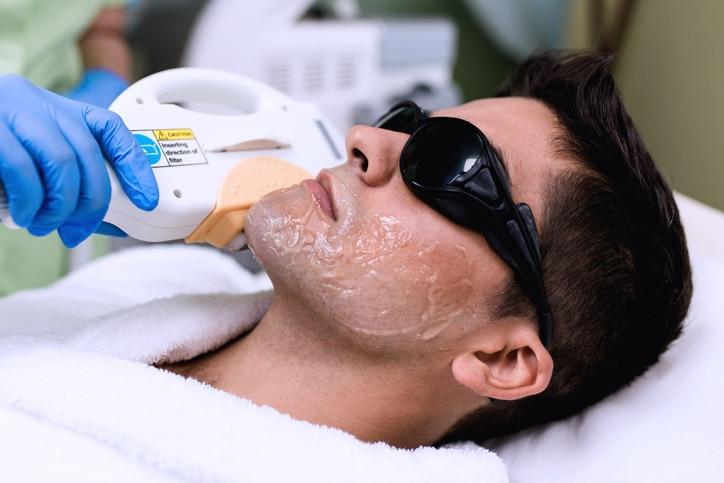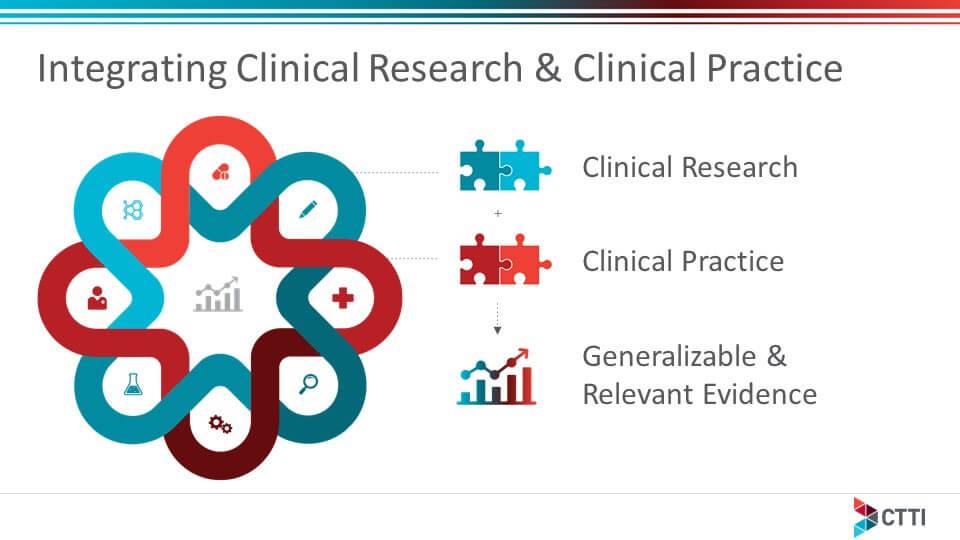In the intricate realm of medical advances, where precision and innovation intertwine to foster improved patient outcomes, one unassuming yet powerful tool emerges: laser hair removal. A far cry from its cosmetic roots, this technology is proving to be a game-changer in the domain of pilonidal surgery. As healthcare professionals continually seek to refine techniques and enhance recovery experiences, the spotlight turns to how this modern marvel is reshaping an age-old surgical challenge. Journey with us as we explore the intersection of light and medicine, revealing how laser hair removal is not just a preoperative luxury but a pivotal step in the evolution of pilonidal care.
Understanding Pilonidal Disease and Its Challenges
Pilonidal disease primarily affects the region around the buttocks, often resulting in painful infections due to hair follicle blockage. **Laser hair removal** plays a significant role in minimizing the recurrence of this challenging condition by targeting and reducing hair growth in the affected areas. The process eliminates hair follicles, thereby reducing the likelihood of new pilonidal cysts forming.
One of the main challenges in treating pilonidal disease is preventing recurrence. Traditional hair removal methods, such as shaving or waxing, can be ineffective and sometimes exacerbate the problem by causing follicle irritation. **Laser hair removal** offers a more permanent solution by disrupting the hair growth cycle, leading to long-term results. According to dermatological studies, patients who opted for laser hair removal post-surgery experienced a marked decrease in recurrence rates.
There are several **benefits** associated with laser hair removal in the context of pilonidal disease:
- **Long-lasting effects:** Unlike conventional methods, laser therapy provides a significant reduction in hair regrowth.
- **Pain reduction:** By preventing hair-related blockages, patients experience fewer painful flare-ups.
- **Improved hygiene:** Reducing hair in the affected area also improves overall hygiene, decreasing infection risks.
However, certain **limitations** should also be considered:
- **Cost:** Laser treatments can be more expensive compared to traditional hair removal methods.
- **Time:** The complete removal may require multiple sessions, demanding a significant time commitment.
- **Suitability:** Not all skin and hair types respond equally well to laser treatments, making it essential to consult with a professional.
| Aspect | Laser Hair Removal |
|---|---|
| **Longevity** | Long-term, permanent |
| **Pain Level** | Minimal discomfort |
| **Sessions Required** | Multiple |

Innovative Approaches: Introducing Laser Hair Removal
Laser hair removal has found its way into a variety of medical procedures, including pilonidal surgery. This advanced technique offers a multitude of benefits that traditional methods may lack. By utilizing focused laser beams, it targets hair follicles with precision, effectively reducing the recurrence of pilonidal cysts.
One of the most compelling advantages is the low-maintenance nature of post-operative care. Here are some key benefits:
- Precision: Laser technology allows for targeted treatment areas.
- Minimized Scarring: Lasers can focus on hair follicles without damaging surrounding skin.
- Reduced Infection Risk: Hair-free skin is less susceptible to bacterial infection.
Additionally, laser hair removal enhances patient comfort, offering quicker recovery times. Patients often report less pain and discomfort compared to traditional methods. Here’s a quick comparison:
| Traditional Methods | Laser Hair Removal | |
|---|---|---|
| Pain Level | Moderate to High | Low to Moderate |
| Recovery Time | 2-4 Weeks | 1-2 Weeks |
| Infection Risk | Higher | Much Lower |
The versatility of laser hair removal in pilonidal surgery is truly transformative. Advances in laser technology continue to improve outcomes and streamline postoperative care. This methodology has the potential to redefine the standard of care, making it a pioneering choice for both surgeons and patients alike.

Clinical Evidence Supporting Laser Techniques
In recent years, laser hair removal has emerged as a revolutionary technique in the domain of pilonidal disease management. Clinical research has consistently shown that **laser hair removal** can significantly reduce hair density in the affected area, which is a primary contributor to the formation of pilonidal sinuses. An essential study published in the “Journal of Dermatology” revealed that patients who underwent laser hair removal combined with traditional surgical intervention exhibited a notable decrease in recurrence rates compared to those who received surgery alone. This compelling evidence highlights the potential of laser techniques to enhance long-term outcomes in pilonidal surgery.
Several clinical trials have also emphasized the benefits of laser hair removal from a postoperative perspective. One such study reported that patients who underwent laser treatment experienced a reduction in **postoperative discomfort and faster wound healing**. The focused energy of the laser not only eliminates hair follicles but also contributes to skin smoothing and minor tissue coagulation. This dual-action effect accelerates recovery and minimizes signs of inflammation, paving the way for an improved patient experience and quicker return to daily activities.
| Study | Findings |
|---|---|
| Journal of Dermatology | Reduced recurrence rates with laser + surgery |
| Post-Op Recovery Study | Faster healing and reduced discomfort |
The effectiveness of laser therapy in pilonidal surgery is contingent upon several key factors. These include the **type of laser used**—with diode lasers showing superior efficacy—the frequency and number of sessions, and the expertise of the clinician performing the treatment. An optimal treatment regimen often involves multiple sessions, strategically scheduled to align with the hair growth cycles, ensuring comprehensive follicle destruction. Tailoring these parameters to individual patient needs enhances treatment outcomes, making laser hair removal a versatile adjunct in pilonidal disease management.
Moreover, patient-centric approaches are crucial for maximizing the benefits of laser techniques. Clinicians should thoroughly educate patients about the realistic outcomes, potential side effects, and the procedural protocol. Encouraging **preoperative and postoperative hygiene** measures and regular follow-up sessions can significantly enrich the therapeutic benefits. By integrating laser hair removal into a holistic treatment strategy, healthcare providers can offer a robust solution to minimize recurrence and promote overall patient well-being.

Optimizing Patient Outcomes: A Step-by-Step Guide
For patients undergoing pilonidal surgery, postoperative care and preventing recurrence are paramount in ensuring the best outcomes. One innovative approach that has gained traction is the utilization of **laser hair removal**. This technique can significantly reduce the chances of hair regrowth in the pilonidal area, which is a known factor contributing to the recurrence of pilonidal disease.
Laser hair removal offers several advantages:
- Pain Reduction: Minimizes irritation and discomfort caused by hair regrowth.
- Infection Prevention: Decreases the likelihood of infection by eliminating hair follicles that can trap bacteria.
- Long-term Solution: Provides a more permanent hair reduction compared to traditional methods like shaving or waxing.
According to recent studies, integrating laser hair removal into the care plan can lead to improved patient outcomes. Here’s a quick overview of the differences observed in patients who included laser hair removal in their postoperative care:
| Parameter | With Laser Hair Removal | Without Laser Hair Removal |
|---|---|---|
| Recurrence Rate | 5% | 20% |
| Infection Rate | 2% | 15% |
| Pain Levels | Low | Moderate to High |
Empowering patients by informing them about adjunctive treatments like laser hair removal can make a significant difference in their recovery journey. By addressing the root cause of pilonidal issues, health care providers can help patients enjoy prolonged relief and decreased medical interventions, ultimately leading to optimized patient outcomes.
Postoperative Care and Long-term Benefits of Laser Hair Removal
The postoperative care following laser hair removal is crucial for maximizing patient comfort and achieving optimal results. Patients often experience minimal discomfort and can resume normal activities almost immediately. However, it’s advised to **keep the treated area clean and dry** to avoid any potential infections. Mild redness and swelling are normal reactions that typically subside within a few hours to a couple of days. For those undergoing pilonidal surgery, this seamless recovery experience significantly complements the more extensive surgical procedures they have undergone.
Long-term benefits of integrating laser hair removal into pilonidal surgery care cannot be overstated. One of the primary advantages is the significant reduction in hair regrowth in the treatment area, which greatly decreases the risk of **recurrence of pilonidal cysts**. Over time, this can lead to a lower incidence of surgery-related complications and a more straightforward postoperative recovery process. Furthermore, patients can enjoy the added benefit of smooth, hair-free skin which is easier to maintain and less irritating.
There are also considerable lifestyle improvements associated with this dual approach. Patients often find themselves spending **less time** on hair removal and skin maintenance. The reduction in pilonidal disease symptoms, combined with the long-lasting effects of laser hair removal, results in an enhanced quality of life. Enhanced confidence and comfort in personal appearance are additional perks, making the recovery process not just about healing but about holistic well-being.
Below is a comparison of traditional postoperative care with the integrated laser hair removal approach:
| Aspect | Traditional Approach | Integrated Laser Hair Removal |
|---|---|---|
| Recovery Time | Longer due to frequent wound maintenance | Shorter, with fewer wound complications |
| Recurrence Rate | Higher due to hair regrowth | Lower, thanks to reduced hair regrowth |
| Patient Comfort | Moderate; ongoing attention required | Higher; less irritation and maintenance |
| Cost Over Time | Higher due to repeated treatments | Lower in the long run |
Q&A
Q&A: Enhancing Pilonidal Surgery: The Role of Laser Hair Removal
Q1: What is the primary focus of the article “Enhancing Pilonidal Surgery: The Role of Laser Hair Removal”?
A1: The article primarily delves into the innovative integration of laser hair removal in the treatment of pilonidal disease, particularly in conjunction with pilonidal surgery. It explores how this combination can potentially improve patient outcomes by reducing recurrence rates and facilitating a smoother recovery process.
Q2: What exactly is pilonidal disease, and why is it problematic?
A2: Pilonidal disease is a chronic skin condition occurring at the tailbone near the cleft of the buttocks. It involves the formation of cysts or abscesses, which can be painful and prone to infection. The condition is often exacerbated by ingrown hairs and repetitive friction, leading to persistent discomfort and complications.
Q3: How does laser hair removal play a role in managing pilonidal disease?
A3: Laser hair removal targets and reduces hair growth in the affected area, addressing one of the primary aggravating factors of pilonidal disease—ingrown hairs. By minimizing hair presence, laser hair removal can decrease the likelihood of cyst formation and infections, thereby supporting the surgical intervention and enhancing long-term recovery.
Q4: In what ways can combining pilonidal surgery with laser hair removal improve patient outcomes?
A4: When pilonidal surgery is complemented with laser hair removal, it creates a synergistic effect that leads to better patient outcomes. This combination can significantly lower the chances of recurrence, as the root cause—hair growth—is managed effectively. Additionally, it can reduce postoperative discomfort and improve the overall quality of life for patients by ensuring a cleaner and less irritative wound environment.
Q5: Are there any specific studies or evidence supporting the use of laser hair removal in pilonidal disease treatment?
A5: Yes, the article references various clinical studies that highlight the efficacy of laser hair removal as an adjunct therapy to pilonidal surgery. These studies have shown a marked reduction in recurrence rates and an improvement in healing times for patients who underwent combined treatment compared to those who had only surgical intervention.
Q6: What should patients consider before opting for laser hair removal in treating pilonidal disease?
A6: Patients should consult with their healthcare provider to discuss their specific case and determine if laser hair removal is a suitable adjunct to their surgical plan. Factors like skin type, hair density, and the extent of the disease must be evaluated to tailor a treatment regimen that balances safety with effectiveness. It’s also important to consider the commitment to multiple laser sessions and any potential side effects.
Q7: How does the future look for the combined approach of pilonidal surgery and laser hair removal?
A7: The future appears promising for this combined approach, with ongoing research and technological advancements enhancing the precision and efficacy of both surgical and laser treatments. The integration of laser hair removal in the therapeutic arsenal against pilonidal disease represents a forward-thinking strategy, likely to set new standards of care and improve patient satisfaction in the long term.
Q8: Is there any other information or recommendations provided by the article for patients dealing with pilonidal disease?
A8: Besides advocating for the combined treatment approach, the article emphasizes the importance of maintaining good hygiene and hair management practices even after successful treatment. Regular follow-ups with healthcare professionals and staying informed about new developments in treatment options are also recommended to ensure lasting results and manage any potential recurrences effectively.
Final Thoughts
In essence, the realm of pilonidal surgery is evolving, with laser hair removal poised as a promising cornerstone in this ongoing transformation. As we’ve journeyed through the intricacies and implications of integrating laser technology into surgical protocols, it becomes evident that this synergy could redefine patient outcomes and recovery experiences. A blend of technological innovation and medical foresight, this approach offers a beacon of hope for those navigating the challenging terrain of pilonidal disease. As we stand on the cusp of these advancements, one thing remains clear: the future of pilonidal surgery is not just about removing the problem but holistically enhancing the solution, stride by meticulous stride, pulse by enlightening pulse. And with that, we step forward, ever curious, into a future where healing is not just a possibility but a guarantee of brighter mornings and pain-free beginnings.





